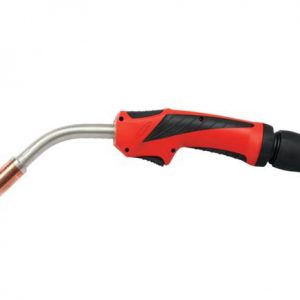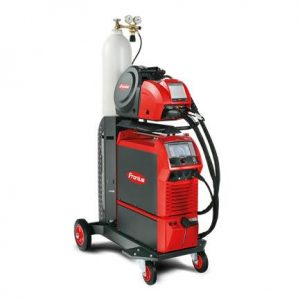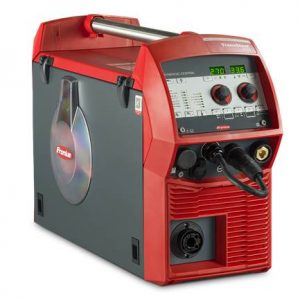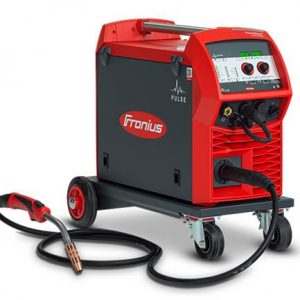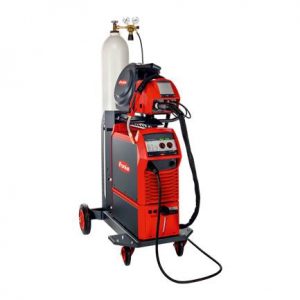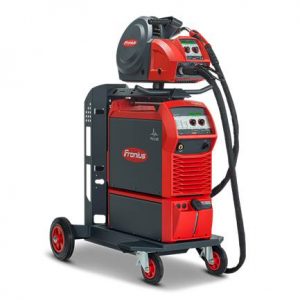MIG Welding Machines

The past few years have seen a real quantum leap for MIG welding technology. Fundamental improvements were made to power sources and welding processes, with completely new standards being reached in some areas. This innovative advance has been triggered on the one hand by new materials and applications, and on the other by the increased use of technically mature microelectronics and digital technology. A good grounding in the basics is extremely helpful when trying to understand the already heavily publicised new technologies. Let us now therefore throw some light on the general aspects of MIG/MAG welding.
Basic system principle
In MIG/MAG welding, the consumable metal electrode is both filler material and arc carrier. The “endless” filler wire is fed via two or four drive rollers into the welding torch, where the current is transferred at the so-called contact tube. The free wire end is concentrically surrounded by a gas nozzle. The shielding gas that flows out prevents chemical reactions between the hot workpiece surface and the surrounding air. This maintains the strength and durability of the weld metal. Inert and active gases can be used as shielding gases. This is why we refer to metal inert gas (MIG) welding and metal active gas (MAG) welding.
In addition to the arc behaviour and deposition rate, the shielding gas is also partly responsible for the material transfer and shape of the weld seam. The inert gases mostly used are argon and helium, plus their compounds. The term “inert” comes from the Greek, meaning “inactive”. Inert gases are suited to practically all metals, and especially aluminium and copper, but not steel. Active gases are mainly argon-based inert gas compounds, yet also contain some oxygen or carbon dioxide, and are comparatively reactive. Active gases are suited to stainless, high-alloy steels, as well as to unalloyed and low-alloy steels. With some limitations, even carbon dioxide on its own is suited to unalloyed or low-alloy steels as an active gas.
Flux cored wires can also be used as an alternative to the shielding gases, with their casing that evaporates in the arc, thereby creating a shielding gas environment. Flux cored wires also ensure reliable gas shielding where there are draughts.

